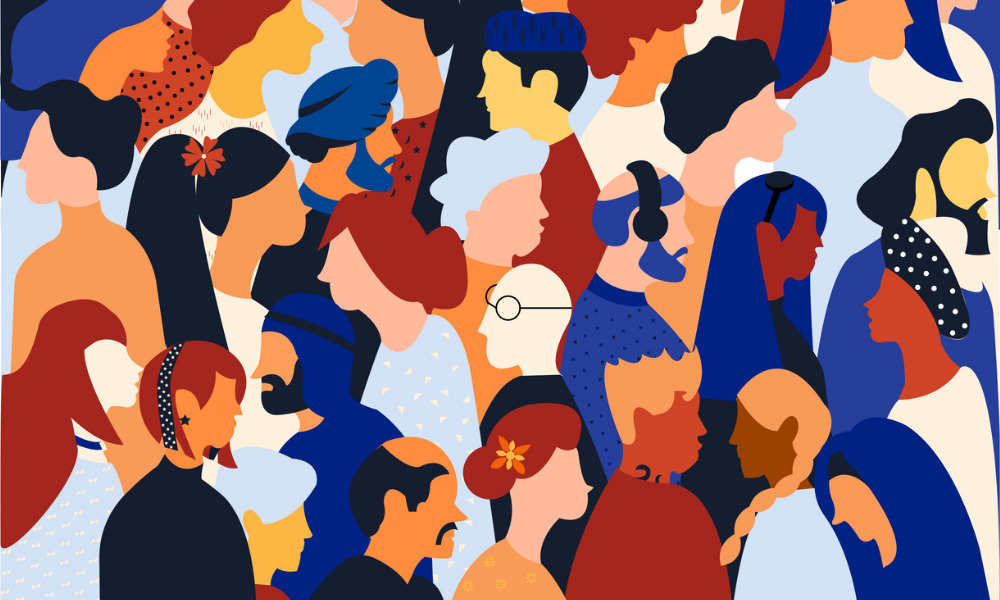DEI momentum may have been lost amid the pandemic

While diversity, equity and inclusion (DEI) are not traditionally thought of as being in the workplace health and safety wheelhouse per se, this view is slowly changing as we shift to a holistic view of worker wellbeing.
“Diversity, equity, and inclusion has many spokes on the safety wheel, and it will be most successful if you integrate it into how you view your programs,” said Stephanie Benay. For example, looking at safety through a female gender lense. Does your safety program consider when a woman might be menstruating, pregnant, breastfeeding or in menopause? Does your program take into considering PPE, safety equipment and tools, workplace design and ergonomics?
Benay posed these questions during a standout panel session at the Safety Leaders Summit, which took place on June 21. During the day-long event, leaders weighed in on important topics in the OHS space. Benay, who is Director – Safety, BC Hydro spoke on the panel alongside Deanna Burgart, President, Indigeneer, Indigenous Engineering Inclusion Inc.
Read more: Moving towards anti-racism in the Canadian workplace
Part of enhancing DEI in a workplace is also about creating a psychologically safe space for “people to bring their whole selves to the workplace,” said Benay.
“The notion of safety implies that there is no risk, or we’re striving towards no risk – zero harm if you will,” said Burgart. “Sustainability is balance [between] people, planet, profit. Neither one is bad, but if you’re out of balance, harm can occur.” Within the context of psychological safety, this means allowing people to show up to work and respecting their culture, their barriers, their needs.
Indeed, sustainability also weaves into DEI and safety. Sustaining a long-term successful DEI focus requires that organizations set aside time and resources for DEI personnel. These are long-term initiatives which need to be woven into the entire organizational fabric – not just in HR policies or training, but also in safety and onboarding.
Burgart said that though DEI is indeed losing momentum in the workplace, she doesn’t think it is necessarily intentional, and that the pandemic was a major factor in the loss of momentum. “I think we all went into survival mode, whether it was financially or personally, whether it was from a mental health standpoint,” she said. “Everything just came to a full stop right away.”
And because we were all trying to figure out what to do without knowing how long the pandemic was going to be, initiatives slowed down. “But I do feel like it’s picking up again,” she said.
Read more: 7 resources for a more equitable workplace
Benay said that it’s a difficult conversation, and that DEI can sometimes be an exercise in ticking boxes with organizations solely focused on increasing diversity. But she said that it’s more about increasing women in leadership, for example, or increasing a marginalized community’s representation.
“Organizations need to identify and communicate DEI value throughout the organization,” said Benay, and demonstrate their commitment to doing the work and committing to more substantive actions. This requires a lot of effort, which is why some organizations are stalling because it is a tough exercise.
Culture starts to change with language, she said. By this she meant that organizations have to look at their safety policies, procedures, communications and training to help choose language that won’t exclude or harm others.
Benay pointed out that many organizations rely on women or BIPOC to lead the efforts. “Often people with privilege or power, such as cisgendered, heterosexual, white male executives or others who hold privileged identities – who likely have had no reason to consider DEI for most of their lives – may feel that that their voices are heard too often, and will turn to people of colour or others to lead such efforts. And this can lead to burnout and resentment, and an even greater sense of lack of equity among workforces.”
You can learn more about our Safety Leaders Summit here.





